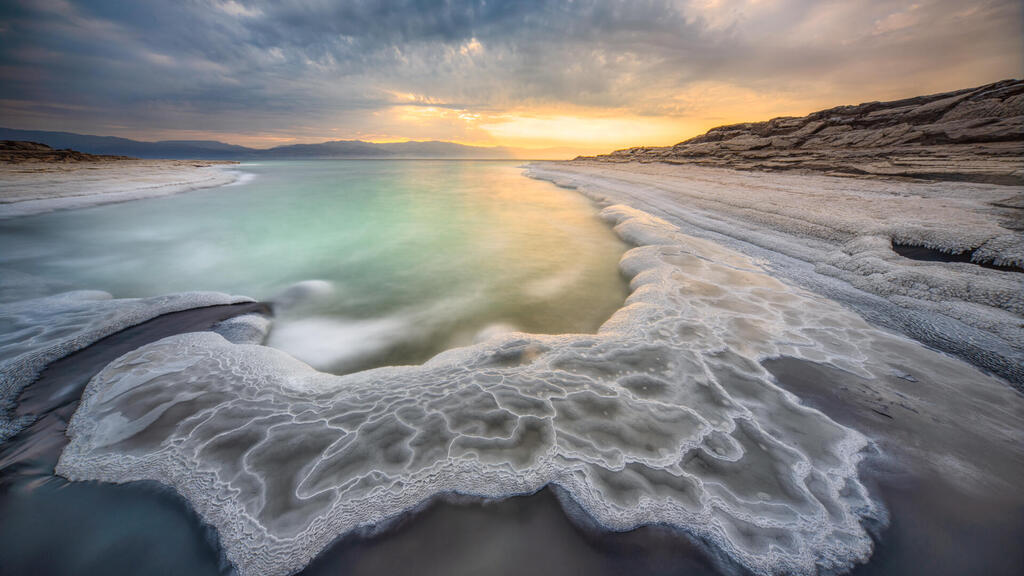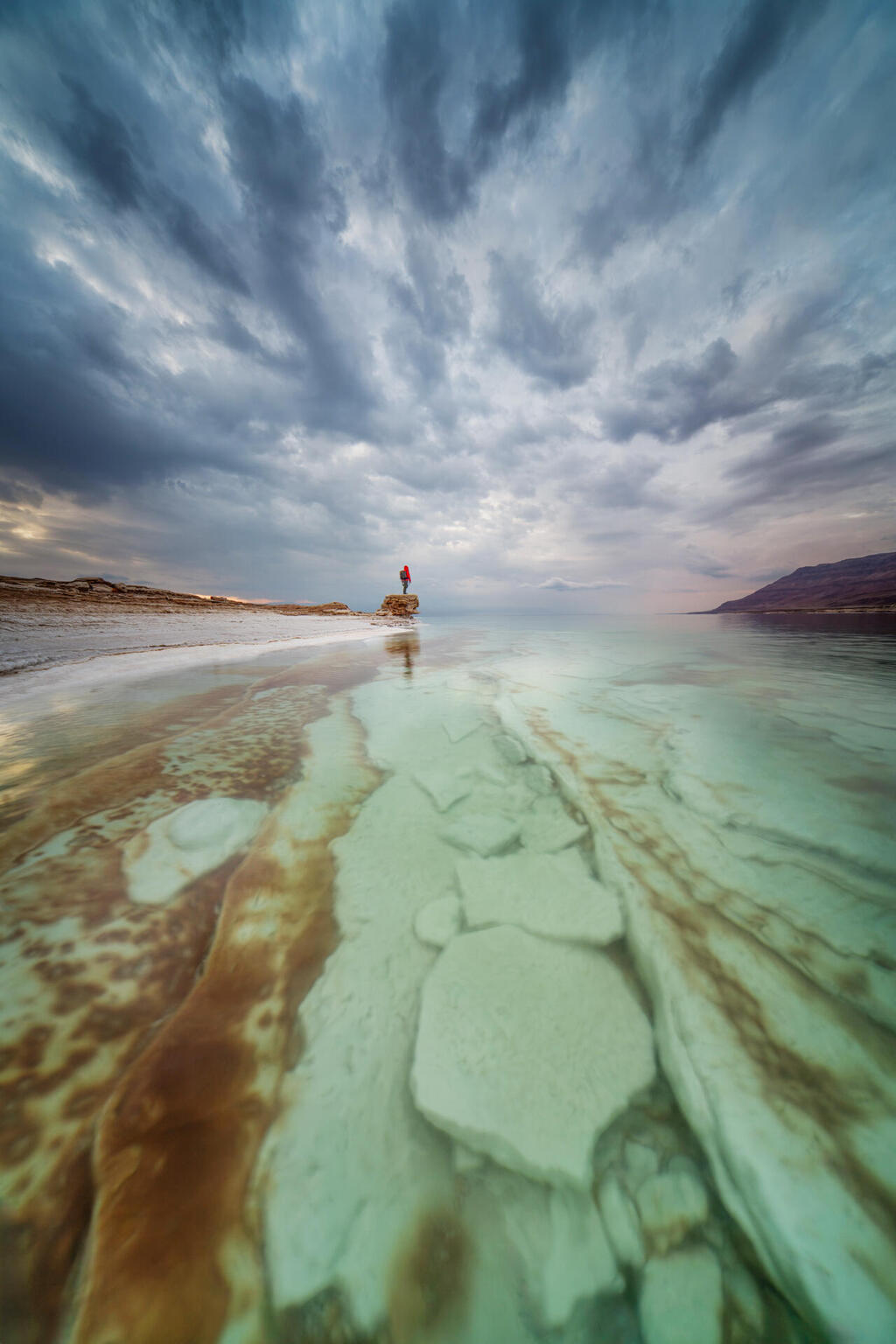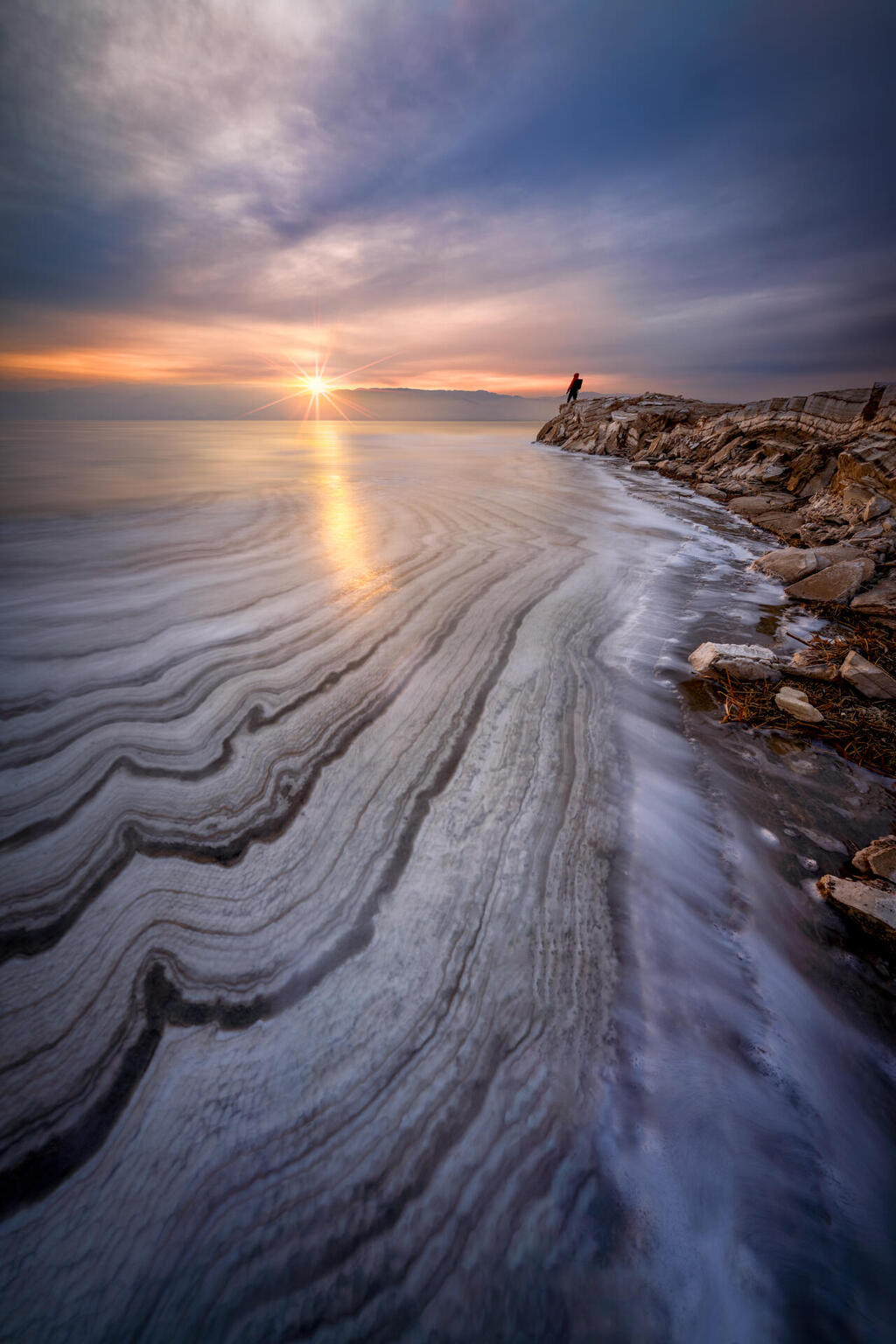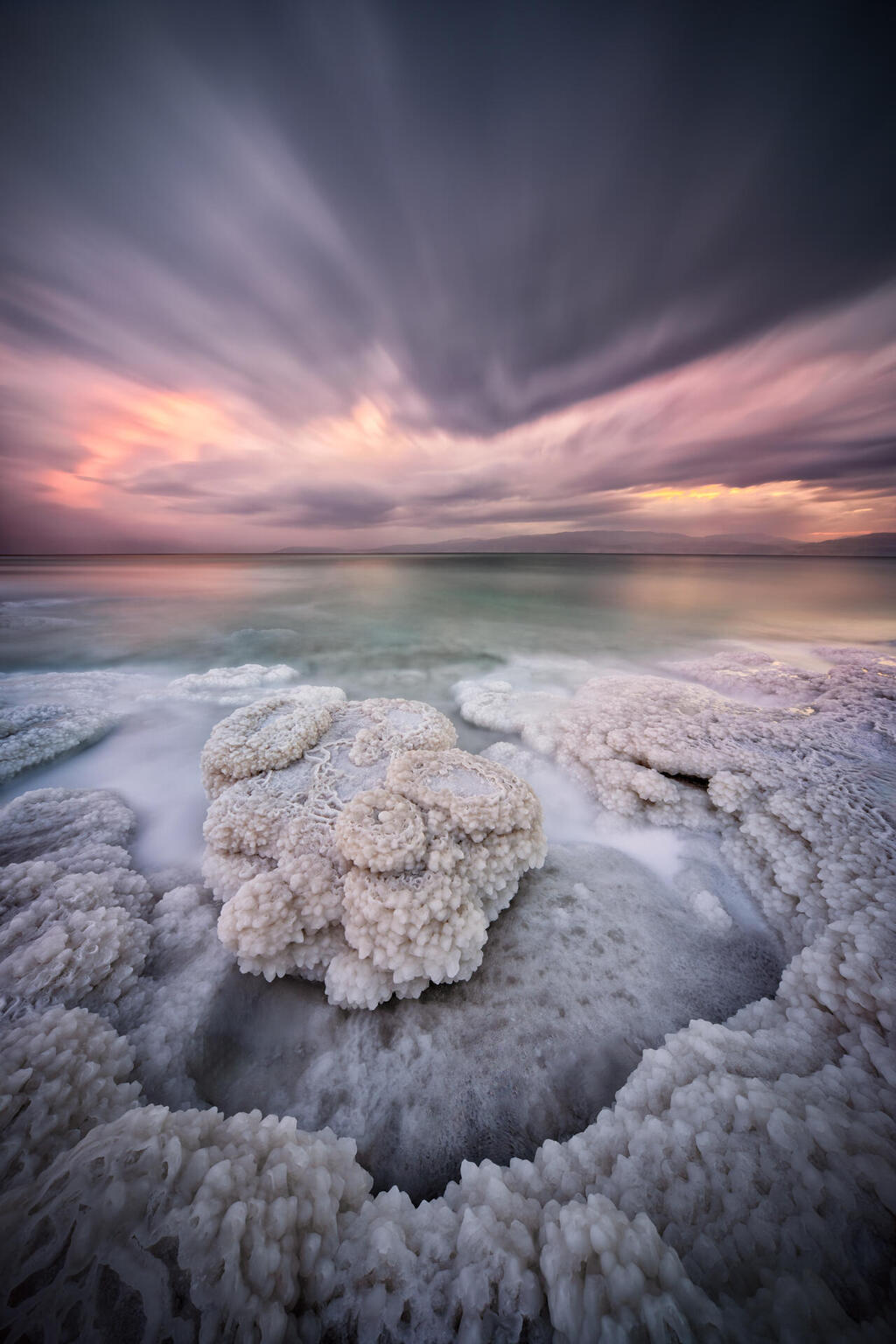Getting your Trinity Audio player ready...
Nestled at Earth's lowest elevation, the Dead Sea stands out as a marvel in Israel, captivating both tranquility seekers and avid landscape photographers alike. The allure of this unique locale isn't just in its serene escape but also in the extraordinary visual elements it offers.
Shooting the Dead Sea
(Video: Asaf Amran)
For those with a camera, the interplay of light at dawn provides an intense, almost ethereal experience. As darkness gently gives way to light, the early morning silence deepens the anticipation, culminating in a sunrise that casts a spectrum of colors upon the waters, creating images that resonate with a soothing, magical quality.
This picture shows incredible textures that look like lace or a "giant" jewel. The white salt textures above the water stand out against the black mud and, around the bay, you can also see a buildup of salt above the water that defines the small bay.
Particularly distinctive to the Dead Sea are its textures and salt crystals that form both beneath and above the water's surface. This phenomenon, a direct result of the sea's unfortunate drying and shrinking, reveals breathtaking patterns that are as ephemeral as they are beautiful, vanishing almost as quickly as they appear.
The above picture was taken at a winter sunrise. I photographed it when the sun had not yet risen, winter clouds in the sky created cool colors and the balanced, soft lighting highlighted the turquoise colors of the water, along with a variety of special textures that only the Dead Sea can offer.
Capturing these fleeting moments demands dedication. Photographers often find themselves trekking several kilometers through challenging terrains, navigating sinkholes and mud-laden paths, all while laden with heavy equipment. The journey to these remote spots typically begins in the pitch-dark hours before dawn, guided only by the beams of flashlights and outfitted in boots to maneuver through the mucky grounds. Yet, any hardship is quickly overshadowed by the sublime beauty of the sunrise – a reward that makes the arduous trek seem trivial.
Stunning salt formations, lines of salt and mud, in a special composition and angle. You can see the spreading of water foam that looks like mist or wind over the salt.
When the unique textures and crystals of the Dead Sea are combined with the dynamic skies of dawn, the vibrant sea colors, and carefully framed compositions, the resulting photographs can appear otherworldly. These stunning vistas, sometimes seeming more like scenes from a distant planet, underscore the surreal beauty of the Dead Sea, making it a prized subject for photographers and a cherished destination for all who visit.
'Salt corals' – crystals that look like corals during a winter sunrise. You can see a combination of dark clouds along with the colors of the sunrise.
Here are 6 tips for photographing the Dead Sea:
To enhance the textures and the crystals you should use a wide lens, thus putting as much of the textures and crystals into the picture as possible. Even if you shoot with a mobile phone, there is an option for a wide lens.
To give the textures and crystals more space and dominance try to shoot from a low angle.
To capture and highlight the textures under the water, you need to shoot with a long exposure that "overshadows" the water moving above the textures. For this purpose, a tripod must be used.
You can add a figure to provide perspective and depth to the image.
Where appropriate, try to shoot in portrait orientation and not just landscape - that way you can include more sky, along with more textures.
Go and experience the wonderful sunrises that the Dead Sea gives us, even take pictures with a mobile phone.
First published: 17:43, 04.30.24








